This commentary is the first of a three-part series on (1) why it is important to define the purpose of education, (2) how historical forces have interacted to shape the purposes of today’s modern schooling systems, and (3) the role of power in reshaping how the purpose of school is taken up by global education actors in policy and practice.
Education systems transformation is creating buzz among educators, policymakers, researchers, and families. For the first time, the U.N. secretary general convened the Transforming Education Summit around the subject in 2022. In tandem, UNESCO, UNESCO Institute for Statistics, UNICEF, the World Bank, and the Organization of Economic Cooperation and Development (OECD) co-authored “From Learning Recovery to Education Transformation” to lay a roadmap for how to move from COVID-19 school closures to systems change. Donor institutions like the Global Partnership for Education’s most recent strategy centers on systems transformation, and groups like the Global Campaign for Education are advocating for broader public engagement on transformative education.
Unless we anchor ourselves and define where we are coming from and where we want to go as societies and institutions, discussions on systems transformation will continue to be circuitous and contentious.
What is missing from the larger discussion on systems transformation is an intentional and candid dialogue on how societies and institutions are defining the purpose of education. When the topic is discussed, it often misses the mark or proposes an intervention that takes for granted that there is a shared purpose among policymakers, educators, families, students, and other actors. For example, the current global focus on foundational learning is not a purpose unto itself but rather a mechanism for serving a greater purpose—whether for economic development, national identity formation, and/or supporting improved well-being.
The Role of Purpose in Systems Transformation
The purpose of education has sparked many conversations over the centuries. In 1930, Eleanor Roosevelt wrote in her essay in Pictorial Review, “What is the purpose of education? This question agitates scholars, teachers, statesmen, every group, in fact, of thoughtful men and women.” She argues that education is critical for building “good citizenship.” As Martin Luther King, Jr. urged in his 1947 essay, “The Purpose of Education,” education transmits “not only the accumulated knowledge of the race but also the accumulated experience of social living.” King urged us to see the purpose of education as a social and political struggle as much as a philosophical one.
In contemporary conversations, the purpose of education is often classified in terms of the individual and social benefits—such personal, cultural, economic, and social purposes or individual/social possibility and individual/social efficiency. However, when countries and communities define the purpose, it needs to be an intentional part of the transformation process. As laid out in the Center for Universal Education’s (CUE’s) policy brief “Transforming Education Systems: Why, What, and How,” defining and deconstructing assumptions is critical to building a “broadly shared vision and purpose” of education.
Education and the Sustainable Development Goals
Underlying all the different purposes of education lies the foundational framing of education as a human right in the Sustainable Development Goals. People of all races, ethnicities, gender identities, abilities, languages, religions, socio-economic status, and national or social origins have the right to an education as affirmed in Article 26 of the 1948 Universal Declaration of Human Rights. This legal framework has fueled the education for all movement and civil rights movements around the world, alongside the Convention of the Rights of the Child of 1989, which further protects children’s rights to a quality, safe, and equitable education. Defending people’s right to education regardless of how they will use their education helps keep us from losing sight of why we are having these conversations.
Themes in education from the Sustainable Development Goals cross multiple purposes. For example, lifelong learning and environmental education are two key areas that extend across purposes. Lifelong learning emphasizes that education extends across age groups, education levels, modalities, and geographies. In some contexts, lifelong learning can be professional growth for economic development, but it can also be practice for spiritual growth. Similarly, environmental education may be taught as sustainable development or the balance among economic, social, and environmental protections through well-being and flourishing—or taught through a perspective of culturally sustaining practices influenced by Indigenous philosophies in education.
Five Key Purposes of Education
The purposes of education overlap and intersect, but pulling them apart helps us interrogate the dominant ways of framing education in the larger ecosystem and to draw attention to those that receive less attention. Categories also help us move from very philosophical and academic conversations into practical discussions that educators, learners, and families can join. Although these five categories do not do justice to the complexity of the conversation, they are a start.
- Education for economic development is the idea that learners pursue an education to eventually obtain work or to improve the quality, safety, or earnings of their current work. This purpose is the most dominant framing used by education systems around the world and part of the agenda to modernize and develop societies according to different stages of economic growth. This economic purpose is rooted in the human capital theory, which poses that the more schooling a person completes, the higher their income, wages, or productivity (Aslam & Rawal, 2015; Berman, 2022). Higher individual earnings lead to greater household income and eventually higher national economic growth. In addition to the World Bank, global institutions like the United States Agency for International Development and the Organization of Economic Cooperation and Development often position education primarily in relation to economic development. The promise of education as a key to social mobility and helping individuals and communities improve their economic circumstances also falls under this purpose (World Economic Forum).
- Education for building national identities and civic engagement positions education as an important conduit for promoting national, community, or other identities. With the emergence of modern states, education became a key tool for building national identity—and in some contexts, also democratic citizenship as demonstrated in Eleanor Roosevelt’s essay; this motivation continues to be a primary purpose in many localities (Verger, Lubienski, & Steiner-Khamsi, 2016). Today this purpose is heavily influenced by human rights education—or the teaching and learning of—as well as peace education, to “sustain a just and equitable peace and world” (Bajaj & Hantzopoulus, 2016, p. 1). This purpose is foundational to civics and citizenship education and international exchange programming focused on building global citizenship to name a few.
- Education as liberation and critical conscientization looks at the centrality of education in confronting and redressing different forms of structural oppression. Martin Luther King wrote about the purpose of education “to teach one to think intensively and to think critically.” Educator and philosopher Paolo Freire wrote extensively about the importance of education in developing a critical consciousness and awareness of the roots of oppression, and in identifying opportunities to challenge and transform this oppression through action. Critical race, gender, disabilities, and other theories in education further examine the ways education reproduces multiple and intersectional subordinations, but also how teaching and learning has the power to redress oppression through cultural and social transformation. As liberatory and critical educator, bell hooks wrote, “To educate as a practice of freedom is a way of teaching that anyone can learn” (hooks, 1994, p. 13). Efforts to teach social justice and equity—from racial literacy to gender equity—often draw on this purpose.
- Education for well-being and flourishing emphasizes how learning is fundamental to building thriving people and communities. Although economic well-being is a component of this purpose, it is not the only purpose—rather social, emotional, physical and mental, spiritual and other forms of well-being are also privileged. Amartya Sen’s and Martha Nussbaum’s work on well-being and capabilities have greatly informed this purpose. They argue that individuals and communities must define education in ways that they have reason to value beyond just an economic end. The Flourish Project has been developing and advocating an ecological model for helping understand and map these different types of well-being. Vital to this purpose are also social and emotional learning efforts that support children and youth in acquiring knowledge, attitudes, and skills critical to positive mental and emotional health, relationships with others, among other areas (CASEL, 2018; EASEL Lab, 2023).
- Education as culturally and spiritually sustaining is one of the purposes that receives insufficient attention in global education conversations. This purpose is critical to the past, present, and future field of education and emphasizes building relationships to oneself and one’s land and environment, culture, community, and faith. Centered in Indigenous philosophies in education, this purpose encompasses sustaining cultural knowledges often disregarded and displaced by modern schooling efforts. Borrowing from Django Paris’s concept of “culturally sustaining pedagogy,” the purpose of teaching and learning goes beyond “building bridges” among the home, community, and school and instead brings together the learning practices that happen in these different domains. Similarly neglected in the discourse is the purpose of education for spiritual and religious development, which can be intertwined with Indigenous pedagogies, as well as education for liberation, and education for well-being and flourishing. Examples include the Hibbert Lectures of 1965, which argue that Christian values should guide the purposes of education, and scholars of Islamic education who delve into the purposes of education in the Muslim world. Indigenous pedagogies, as well as spiritual and religious teaching, predate modern school movements, yet this undercurrent of moral, religious, character, and spiritual purposes of education is still alive in much of the world.
Beyond the Buzz
The way we define the purpose of education is heavily influenced by our experiences, as well as those of our families, communities, and societies. The underlying philosophies of education that are presented both influence our education systems and are influenced by our education systems. Unless we anchor ourselves and define where we are coming from and where we want to go as societies and institutions, discussions on systems transformation will continue to be circuitous and contentious. We will continue to focus on upgrading and changing standards, competencies, content, and practices without looking at why education matters. We will continue to fight over the place of climate change education, critical race theory, socio-emotional learning, and religious learning in our schools without understanding the ways each of these fits into the larger education ecosystem.
The intent of this blog is not to box education into finite purposes, but to remind us in the quest for systems transformation that there are multiple ways to see the purpose of education. Taking time to dig into the philosophies, histories, and complexities behind these purposes will help us ensure that we are headed toward transformation and not just adding to the buzz.
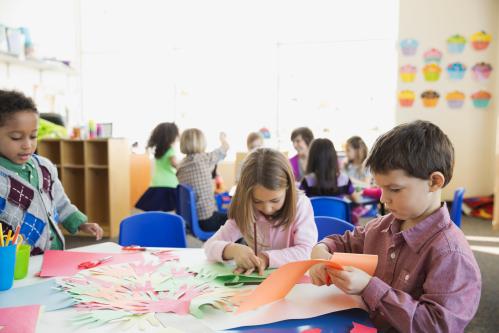
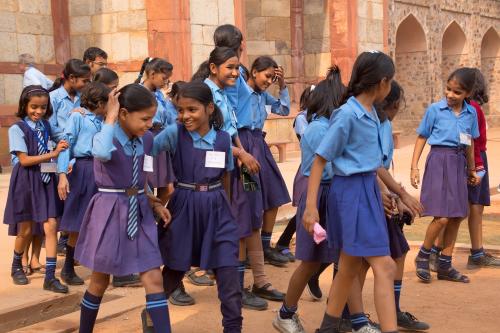
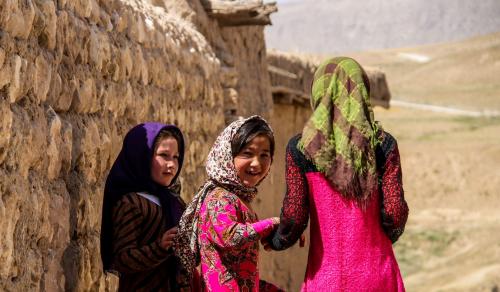
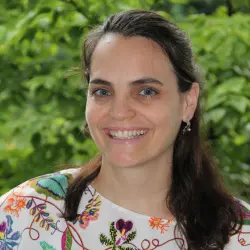
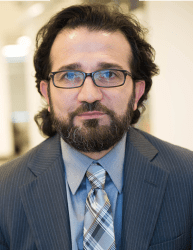


Commentary
In the quest to transform education, putting purpose at the center is key
February 16, 2023